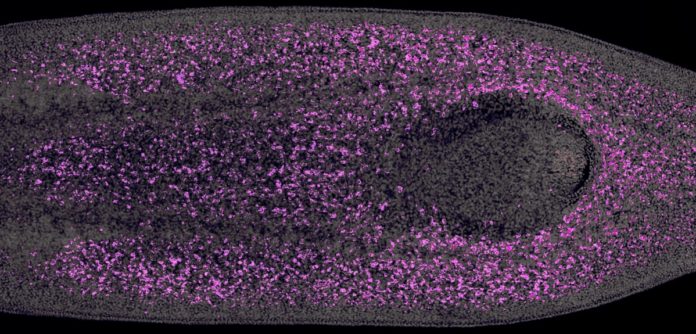A new study by the Oxford University suggests that a special combination of epigenetic alterations vital to stem cell development advanced in creatures substantially sooner than beforehand valued.
These discoveries suggest that our stem cells, and those of simple animals, for example, planarian worms, have similarity at the epigenetic level than already thought. This insight could benefit in enhancing the use of stem cells in regenerative medicine-based approaches to treating tissues and organs damaged by disease or age.
For the study, scientists used highly regenerative planarian flatworm as a test organism.
Lead author of the study, Professor Aziz Aboobaker from Oxford University’s Department of Zoology, said: “These worms take many people back to their childhood, thinking about superpowers and heroes. They recover from almost any damage or wound, regenerating their whole bodies from small starting fragments in about seven days.”
“They can do this because they are chock full of very special adult stem cells that not only have the ability to generate any other cell type in the body but do so in a controlled and organized manner that allows for whole body regeneration. Understanding how they do this is key for understanding how we might make better use of our own stem cells.”
While DNA gives the guideline manual to how life on Earth is made, how these directions are deciphered is pivotal. A procedure known as ‘epigenetic modifications’ – synthetic alterations that enliven DNA and the histone proteins around which DNA is wrapped – is fundamental to how these directions are comprehended and taken after.
The coding for this modification process is essential for the proper functioning of genes. The combination of these epigenetic alterations acts to mark genes either as active or silent, to ensure that sets of genes undertake the correct processes in the right cells of the body.
If this functioning goes wrong, it may lead to genes being active or silent when they are not supposed to be. These errors are thought to underpin the progress of many diseases including cancer and the natural aging process.
There are subsets of genes in stem cells that have an extraordinary ‘sitting on the fence’ arrangement, implying that both active and silent marks are available in the meantime. This course of action is thought to support the uncommon property of stem cells being ‘pluripotent’ (the capacity to wind up some cells, however, are ready to switch on if required to do as such, a state known as ‘bivalency’.
Bivalency was widely thought to be specific to complex animals such as humans and other vertebrates. Though, the study suggests that this process probably evolved much earlier.
Professor Aboobaker added: ‘Many groups across the world now use planarians as a model system to study stem cells and regeneration, but one important aspect of this is what extent planarian stem cells work in the same way as our stem cells. So far the jury has been out on this, but our recent findings now suggest that they are very similar.’
To determine the presence of bivalency in planarian stem cells, scientists sorted the stem cells from whole worms and isolated packaged DNA with epigenetic modifications intact. Using this material they then used antibodies that recognize both the activating and silencing marks and sequenced the DNA associated with them throughout the genome.
Anish Dattani, a graduate student in the Aboobaker Lab, said: “Our data quite clearly shows that active marks associated with the genes known to be switched on the stem cells and that silencing marks are placed at genes that are off. But the question was whether worm stem cells also had bivalency.”
“Previous evidence from other invertebrates and simple animals suggested this was only present in mammals and fish. We then looked for genes with both marks at the same genes. Not only did we find genes with both marks, but we noticed that many of these were genes that switch on just as stem cells have made the decision to differentiate and become another cell type. This was really strong evidence that bivalency was present and doing the same thing as in our stem cells.”
Professor Aboobaker concluded: “The results of this approach served to confirm the team’s findings that ‘bivalency’ seems likely to have evolved earlier in multicellular animal evolution than we thought, and this adds to the growing narrative that simple worm stem cells and our stem cells have much more in common then we imagined when we started this work.”
The study is published in the journal Genome Research.
